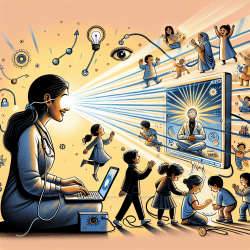In the realm of speech-language pathology, making data-driven decisions is crucial for fostering the best outcomes for children. A recent study titled Assessing Anishinaabe Childrens Narratives: An Ethnographic Exploration of Elders Perspectives offers valuable insights that can be instrumental in refining our practice. This study explores the narrative skills of Anishinaabe children through a culturally sensitive lens, highlighting the importance of culturally relevant assessment methods.
Traditional Western-based narrative analysis tools, such as the Narrative Scoring Scheme (NSS) from the Systematic Analysis of Language Transcripts (SALT) software, often fail to align with the narrative structures valued in Anishinaabe culture. This incongruence can lead to misinterpretations of a child's narrative abilities and, consequently, inappropriate educational strategies.
Key findings from the research indicate that Anishinaabe narratives are often rich in descriptive language, humor, and relational elements. Elders identified 21 preferred narrative elements that were culturally significant, such as:
- Flow of events and ideas without interruption
- Use of descriptive language to create vivid pictures
- Statements or expressions of emotion and feelings
- References to relationships with family and community members
By integrating these elements into our narrative assessments, we can better appreciate the storytelling skills of Anishinaabe children and create more effective and culturally appropriate intervention strategies.
For practitioners, this research underscores the necessity of adopting a dual approach to narrative assessment. While traditional tools like the NSS provide a standardized measure, incorporating emically-derived protocols ensures that the cultural context is respected and understood. This holistic approach can lead to more accurate assessments and better educational outcomes for children from diverse backgrounds.
To implement these findings in practice, consider the following steps:
- Engage with the community to understand cultural narratives and values.
- Use culturally relevant materials and settings for narrative elicitation.
- Incorporate storytelling circles and involve Elders in the assessment process.
- Train educators and practitioners in culturally sensitive assessment techniques.
By fostering an inclusive and culturally aware environment, we can support the narrative development of all children, honoring their unique cultural backgrounds and promoting their academic and social success.
To read the original research paper, please follow this link: Assessing Anishinaabe Childrens Narratives: An Ethnographic Exploration of Elders Perspectives.










